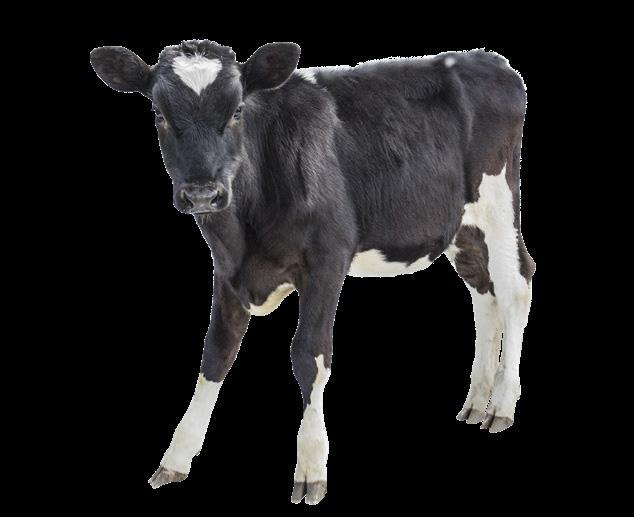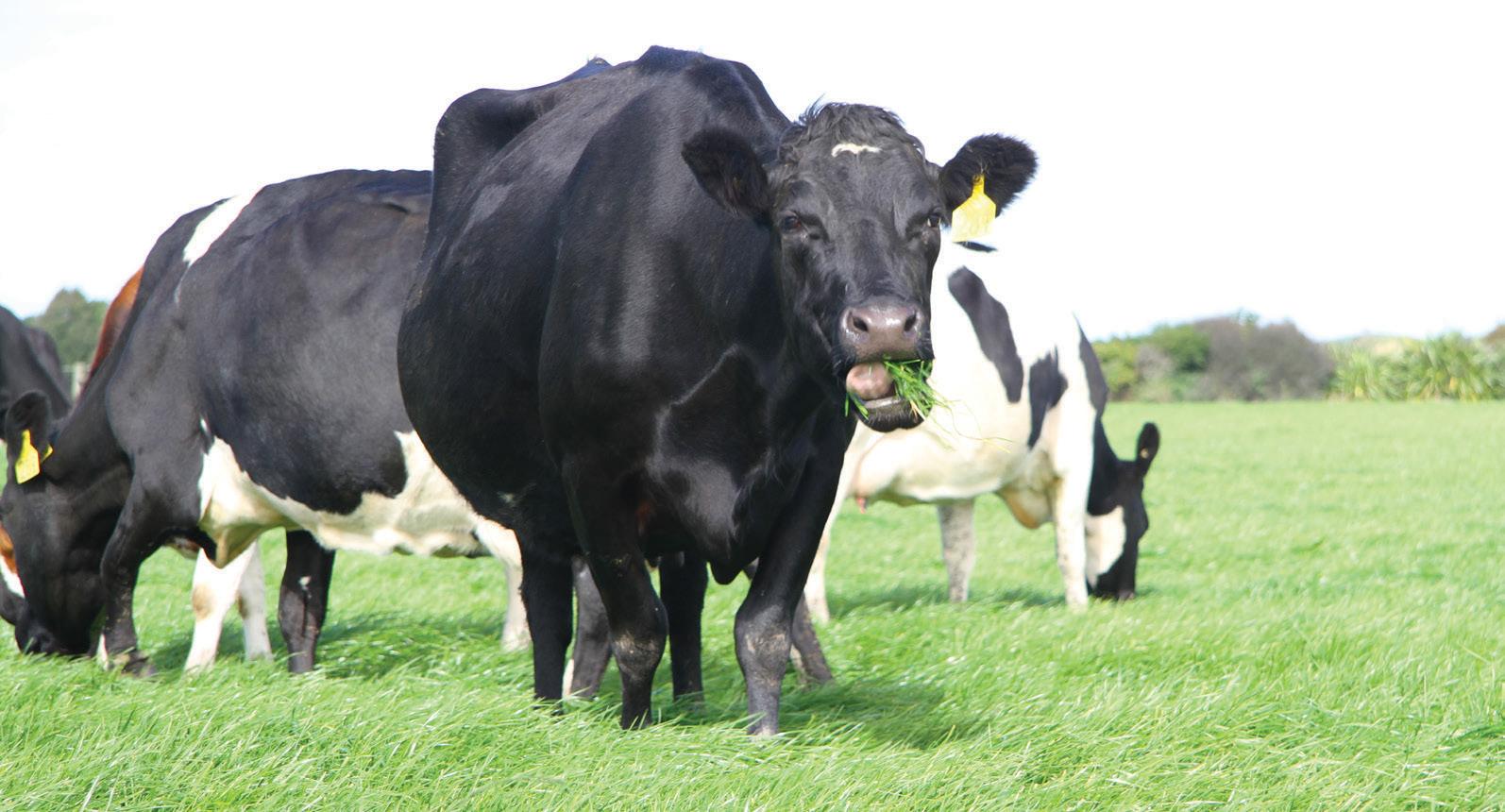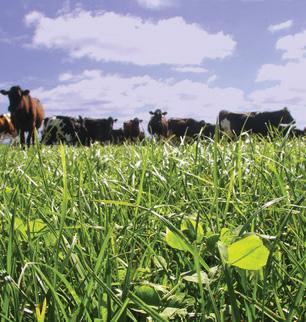
13 minute read
Time for farmers to up their game on long-term land use
INSIGHT UPFRONT CARBON FARMING
Cashing in on the edge
As “carbon farmers’ buy up New Zealand farm land, it’s time for existing operators to up their game on long-term land use. Phil Edmonds reports.
If you’re not sizing up your ridges, verges and margins, you’re probably thinking about it. All the market signals are pointing to not much short of a free money bonanza to anyone holding tracts of land outside that which is in reliably productive pasture.
Despite elevated fears among rural communities of irreversible land use change as a result, the Government has so far been reluctant to intervene. But what looks like the inevitable may not yet come to pass if farmers are handed responsibility for offsetting their own agricultural emissions, and if younger farmers start thinking about optimising their land use for the longerterm future.
The basis of the emerging bonanza should now be familiar – that being the rising price of carbon emission units, as determined by the Government given its ultimate control of supply. Those who are in the position to sell units (such as owners of sequestered carbon) are winning, and given the Government’s desire to see tangible behaviour change from emitters, are predicted to continue winning as the price is orchestrated upwards.
The current price is sitting at $49 per NZU (tonne of emissions). This has almost doubled
Phil Journeaux: With a carbon price at $25, trees planted and entered into the Emissions Trading Scheme (ETS) would be making 14% return on capital, and at $50 per tonne of emissions, a 25% return on capital. since the market changed in 2020 from being determined by a fixed price to a price floor and ceiling. To illustrate the influence of this price change on those in a position to supply stored carbon (foresters) via the secondary market, AgFirst economist Phil Journeaux has modelled comparative returns on capital for sheep and beef farms (about 4%) with that of farmed forests. He says with a carbon price at $25, trees planted and entered into the Emissions Trading Scheme (ETS) would be making 14% return on capital, and at $50 per tonne of emissions, a 25% return on capital.
But the extent of those returns may yet be eclipsed as the Government considers advice from the Climate Change Commission, which has recommended a price floor of $30/tonne and price ceiling at $70/t + 10% per annum. At this stage there is a good chance the price will in due course exceed even this, as the Government is forced to become even more instructive to meet its Paris Agreement obligations and reduce New Zealand’s overall emissions.
In its latest rural property market update for forestry, Colliers noted “land for forestry purposes continues to be in high demand… supported by upward pressure on carbon prices… we expect the market will continue to strengthen with comparable carbon markets in Europe at a level commensurate of NZ$90 per NZU.”
With this in mind it’s no wonder that interest in tree planting, and land use change for this purpose has been piqued – to put it mildly. What, however, is the realistic chance of NZ being covered in pine, to the extent that those who believe the market incentives will dictate all behaviour?
Opinion on this is widely drawn, not helped by patchy, contestable data.
Beef & Lamb NZ released a commissioned report in August which estimated about 34% of the 77,800 hectares of whole farms sold since 2017 were to carbon-only entities due to the escalated carbon price. The accuracy of this claim has since been questioned by the Government, which has suggested a significant exaggeration in the accounting, as well as failing to acknowledge the wider context – that there had been net deforestation between 2005 and 2018 and this has only recently been counteracted.
The Forest Owners Association also challenged the evidence provided, saying the forestry planting rates proposed in the report are not robust or detailed enough to draw any conclusion that should encourage the Government to express concern. Furthermore, Journeaux notes that most of the land identified as sold in the BakerAg report has yet to be planted, so it is too soon to determine the impact.
For those calling for a halt to the tree planting race, it is increasingly difficult to see the Government intervening, despite sticking to the well-worn message that it wants to see the “right tree in the right place”.
Before the last election, Labour indicated it would amend the National Environmental Standards for Plantation Forestry, enabling councils
TRI-SOLFEN® Local anaesthetic and antiseptic spray on solution, providing pain relief for Calves and Lambs
VET ONLYAVAILABLE FROM YOUR VETERINAR I A N • Effective pain relief for use: › As an adjunct therapy for calves after disbudding using hot iron cautery › On calves and lambs during and following castration › On lambs following tail docking • Easy to use, via topical application by spray nozzle applicator gun • Active ingredients Lignocaine/Bupivacaine/
Adrenaline/Cetrimide • Pack size 1 Litre
ACVM Registration No: A011409 *Available after consultation with your Veterinarian
For more information please contact your local Veterinary Practice www.dechra.co.nz
Call us on 0800 479 838
John-Paul Praat: Exotics like cypress, eucalyptus and redwood should be explored more carefully. to determine the type of land deemed suitable for plantation forestry and required resource consent. In July this year however, Forestry Minister Stuart Nash stated the policy change is now on ice while it does more work to respond to the Climate Change Commission advice on how to meet NZ’s emissions commitments.
The reality is many farmers who would support some imposed restriction, might also be conflicted by their own self-interest, and a principled entitlement to pursue economic opportunities as they see fit. Waikato-based land management consultant John-Paul Praat says there are always unintended consequences from knee jerk prescriptive legislation.
“If for example a farmer wanted to put in a block of firewood eucalyptus and had to get a resource consent to do so, they are unlikely to be happy.”
Journeaux says it would be difficult trying to tell farmers who own hill country farmland, which may have seen its value increase, they are effectively no longer able to realise that value with new restrictions placed on the land use.
Beyond a ban on tree planting across land classes 1-5, B+LNZ has called for the Government to look at limiting large carbon emitters in the ETS scheme from being able to offset their entire liability through the purchase of units. This view has been supported by Parliamentary Commissioner for the Environment Simon Upton, who had said industrial emitters should be made to focus on changing their behaviour rather than buying credits from trees planted on farmland.
But any movement here would potentially be as economically challenging as making farmers pay the full cost of their emissions. The Government will certainly want to see behaviour change from energy providers, but presumably, in a way that incrementally lifts the real cost of producing energy rather than shocks it into an unaffordable sphere.
There have also been pleas for the Government to do more to encourage the planting of native tree species for carbon sequestration rather than exotics. This would slow the speed at which planting was undertaken, and also likely diminish the incentive to use class 1-5 land for forestry. B+LNZ indicated this could be enabled by more focus on biodiversity and ecosystem services.
“Farmers say they would prefer to plant natives than pine. But the cost of establishment is horrendous by comparison. The only option to shift the balance would be to subsidise the planting, and that was tried under the billion trees programme, and it still wasn’t enough,” Journeaux says.
Praat agrees natives can not compete in any economic decision-making on forest planting but suggests other exotics like cypress, eucalyptus and redwood should be explored more carefully. “They are a halfway house. The carbon returns will be slightly lower, but offer higher value returns from selective logging in the future. They present a better long-term option.”
If there is going to be a near-term disruptor to the compelling incentives farmers have to convert farmland into forestry, it may come towards the end of the year when the Government is likely to indicate how agricultural emissions will be accounted for and ultimately priced.
Some farmers keen on converting land for carbon farming have reportedly been holding back from commencing a planting programme to capture ETS credits to see whether the Government will allow farmers to offset their own emissions liability with sequestered carbon onfarm. If it does so, it is possible selective tree planting may be more beneficial, and this might stall the wholesale farm conversions to forestry.
In a recent presentation to investors on forestry and carbon, MyFarm general manager of investments Con Williams suggested “planting
trees could be seen as a hedge against agricultural emissions being priced at a farm level. But if you are thinking of carbon as a revenue stream, you’d be inclined to think about how you view the future price of carbon.”
At the moment, that price appears to be only going in one direction.
In terms of forecasting how the Government might move on agricultural emissions, much still hinges on the progress made by He Waka Eke Noa on developing an alternative GHG emissions pricing mechanism for agriculture outside the ETS. Under the Climate Change Response Act, implementation of farm-level accounting and reporting of emissions as well as farm management plans must be ready by 2025. By early 2022, recommendations of the core design features of an alternative pricing system are required.
Several months ago, He Waka Eke Noa programme director Kelly Foster indicated they had their work cut out.
“Having 100% of farms knowing their emissions by the end of 2022 is an ambitious target.” Without the known prospect of any technology breakthrough that will curtail methane emissions from livestock, as has been hoped for, pressure will be placed on the Government to make a difficult decision on how to pursue this.
It is worth remembering that if after receiving the advice the Government considers the progress has not been sufficient, it is still possible for the agricultural sector to be rolled into the NZ ETS prior to 2025. In which case, doubts about the current conundrum over where to plant trees for what purpose would be effectively ended.
Praat is confident the Government will persevere with developing a mechanism to measure emissions at the farmgate but doubts it will be in place by the signposted 2025.
“This should not, however, present an excuse to stall on planting trees, because even if the Government does not bring emissions accounting on at the farm level, there will always be the opportunity to sell credits on the open market, which can then offset any obligations. The best option is to start understanding best land use now and where carbon sequestration might work on their own farm.”
Journeaux understands the logic of farmers’ hesitation. Like Praat, he says farmers need to plan, but acknowledges, “At the moment, you don’t know what the rules will be. Once we know the rules and the price farmers will be in a much better position to make decisions.”
While the uncertainty prevails, one action farmers can take now that will leave a more assured outcome is more focus placed on succession planning. Praat suggests the sale of farms for carbon planting has come about partly due to farmers reaching retirement and having nothing in place to pass on a sustainable going concern. For farmers without the next generation showing interest, they’re going to take the money because they have no one else to think of.
“Farmers need to be thinking about a succession plan. My experience is farmers are not great at long-term succession planning, and still follow a ‘she’ll be right, we’ll sort it out in the end’ approach.”
At this (still) early stage, there is clearly an imbalance in favour of the market over regulation in the motivational forces driving farm forestry. In the near term the muchanticipated future agricultural emissions policy could tilt that balance, or at least challenge current thinking. Beyond that, the farming community’s best defence looks like more astute attention paid by individual farmers to long-term land use planning.
Pasture & Forage News
September 2021

New cow-friendly tetraploid means a change for the better
Farming is changing fast, but 4front, our new tetraploid perennial ryegrass, will help you stay one step ahead, and your cows will love you for it, too.
Palatable, dense and high yielding, 4front grazes well; encourages cows to eat more for higher per head production, and equally important, can improve environmental outcomes. Tetraploids are fantastic nutrition for grazing animals, because they are so palatable and easy to eat, with more ME per mouthful than diploid ryegrass. The average lactating dairy cow takes about 25,000 bites of pasture each day – that’s a lot of work! 4front’s softer, making it easier for them to take each bite, keeping them wellnourished for less effort, improving their daily lives. As well as being more palatable than diploid perennial ryegrass, tetraploids are very valuable for producing milk from fewer cows. Lincoln University Dairy Farm is a dramatic example of what can be achieved here. It has reduced cow numbers, cut N fertiliser applications, and sharply limited N leaching and GHG. It’s done this by becoming more efficient, growing more pasture for the same N, and producing more milk per cow, coupled with significant cost savings. One of the keys to LUDF’s successful change is use of tetraploid ryegrass, which has now been sown in all but one paddock, because it remains palatable at higher covers. This doesn’t sound much, but it means more photosynthesis, so the farm is growing over 1.2 t DM/ha/ year more - with just this one change! 4front has the highest DM yield of any tetraploid we’ve bred, and its cool season growth also has the advantage of utilising soil N at the riskiest time of the year for N leaching. It also has more tillers than other tetraploids, for improved persistence. To learn more about how 4front can help change the way you farm, either on its own or mixed with Maxsyn, download your free copy of The 4front System from our website.
Mixing it up
Mixing diploid with tetraploid ryegrass never used to be common practice, because it was always thought the tetraploid would be grazed out.
But tetraploid 4front and diploid Maxsyn combine well. Together they give a great pasture – denser and more robust that a straight tetraploid, with much better palatability than a straight diploid. This 50:50 mix is easy to manage during periods of fast growth, because it remains palatable even at relatively high covers. For farmers who want the easy grazing and improved animal performance of a tetraploidbased pasture, but who have struggled getting straight tetraploids to persist, this is now a very successful and popular option. Sow 10 kg/ha Maxsyn (half of the recommended 20 kg/ha) with 15 kg/ha 4front (half of the recommended 30 kg/ha). With Kotuku and Weka white clovers, this mix gives the balance of palatability and persistence to improve profitability across many situations.











